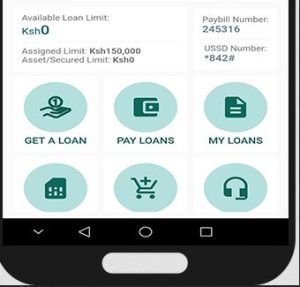While African countries are rich in resources, some have endured economic struggle leading to weak currencies that harbor their progress. After featuring strong currencies that trade for as low as 3 TND for a dollar, we will cover the other side of the coin today.
A country’s currency affects its operations, especially outside the country. Some African countries with the weakest currencies include Sierra Leone, Guinea, and Madagascar.
From inadequate financial resources and corruption to political instability, some African countries continue to face numerous challenges that weaken their currency. Here I will cover the ten weakest currencies and the reason for their volatility.

Let’s delve in!
10 Weakest Currencies In Africa
If you’re in a hurry, here is a brief overview of the ten weakest currencies in Africa.
| Position | Currency | Country | Exchange Rate |
| 1. | Sierra Leonean Leone (SLL) | Sierra Leone | 1 USD = 22,489.5 SLL |
| 2. | Guinean Franc (GNF) | Guinea | 1 USD = 8,607.95 GNF |
| 3. | Malagasy Ariary (MGA) | Madagascar | 1 USD = 4,479.54 MGA |
| 4. | Ugandan Shilling (UGX) | Uganda | 1 USD = 3710.07 UGX |
| 5. | Burundian Franc (BIF) | Burundi | 1 USD = 2877.01 BIF |
| 6. | Congolese Franc (CDF) | Democratic Republic of Congo (DRC) | 1 USD = 2860 CDF |
| 7. | Tanzania Shilling (TZS) | Tanzanian | 1 USD = 2635 TZS |
| 8. | Malawian Kwacha (MWK) | Malawi | 1 USD = 1733.00 MWK |
| 9. | Rwandan Franc (RWF) | Rwanda | 1 USD = 1306.49 RWF |
| 10. | Angolan Kwanza (AOA) | Angola | 1 USD = 856.63 AOA |
The value of a currency can decrease due to various reasons, including political instability, economic challenges, increased budgetary deficits, the printing of more money by the country’s central bank, and increased debt burden of the economy.
As resource-endowed as Africa is, some of its countries still face financial difficulties such as weak currency. This list contains the 10 weakest African currencies and their exchange rate as of 1st July 2024.
1. Sierra Leonean Leone (SLL)
(1 USD = 22,489.5 SLL)
Sierra Leonean Leone or SLL is the weakest currency across Africa. Faced with numerous challenges such as high debt burdens, high inflation, and declined economic activity, Sierra Leone’s currency has gone through a huge dip, leaving the country with low purchasing power.
In the second half of 2022, Sierra Leone launched a redenomination of the SLL known as SLE. 1 SLE = 1000 SLL, and the current exchange rate for the SLL to 1 USD is 22489.55.
2. Guinean Franc (GNF)
(1 USD = 8,607.95 GNF)
The Guinea Franc or GNF is the legal currency for Guinea. The currency’s exchange rate as of today is 8607.95. Ironically, this country boasts huge natural resource reserves for minerals such as bauxite.
Other factors causing the currency’s devaluation include political instability and leadership challenges, hindering economic development despite having great potential. Moreover, external factors such as fluctuating prices for global commodities affect the country’s mining sector.
3. Malagasy Ariary (MGA)
(1 USD = 4,479.54 MGA)
The Malagasy Ariary is the official financial tool for the Madagascar nation. The MGA stands at 4479.54 against the dollar, making it weak for international purchases. Unfortunately, Madagascar has witnessed extreme challenges across different sectors.
From import dependency and high inflation rates to frequent leadership changes, this nation has gone through deteriorating changes. As a result, the Malagasy Ariary continues to depreciate at a high rate.
4. Ugandan Shilling (UGX)
(1 USD = 3710.07 UGX)
Located in Eastern Africa, Uganda has the fourth weakest currency in the continent. Some of the causes of weak currency in this nation include poor infrastructure, high dependency on the agricultural sector, and limited industrialization.
Often, Uganda operates on a negative trade balance as it imports more than it exports. This adds pressure to the Ugandan shilling, trading at 3701.07 against the dollar as of 2024.
5. Burundian Franc (BIF)
(1 USD = 2877.01 BIF)
The Burundian Franc or BIF is the official currency of Burundi and trades at 2877.01. Like Uganda, the country lacks economic diversification and relies mainly on the agricultural sector. Although lucrative, agriculture relies heavily on weather conditions and fluctuating commodity prices.
Burundi also relies on foreign aid heavily and continues to experience recurring political instability. All these challenges cause extreme strain on the country’s economy, depreciating the BIF significantly.
6. Congolese Franc (CDF)
(1 USD = 2860 CDF)
The Congolese Franc is the official legal tender of the Democratic Republic of Congo, popularly known as DRC. The CDF’s exchange rate is at 2860 for a dollar. Even with huge reserves of resources, the country continues to struggle with depreciated currency.
The main cause of the weak Franc is corruption and conflicts that cause economic disruption. Moreover, DRC has low foreign exchange reserves that limit its financial power, weakening its currency.
7. Tanzanian Shilling (TZS)
(1 USD = 2635 TZS)
The Tanzanian Shilling is the official currency of Tanzania, a country in East Africa. The TZS trades at 2635 for 1 USD. Some causes of the depreciated shilling value include uneven economic development due to corruption and inadequate infrastructure.
Although Tanzania has experienced increased exportation, due to the high tourism resurgence, the country’s demand for imports places a strain on its currency.
8. Malawian Kwacha (MWK)
(1 USD = 1733.00 MWK)
The Malawian Kwacha is the official legal tender for Malawi trading at 1733 against the dollar. The nation, which is located southeast of Africa is a landlocked country. Malawi heavily relies on agriculture, a sector that employs over 80% of its population.
As a result, the country is susceptible to external factors such as weather conditions and low agricultural production, causing income strains for its citizens. Additionally, the nation has limited diversification worsening the state of its economy.
9. Nigerian Naira
(1 USD = 1488 NGN)
The naira is the official legal tender for Nigeria. The currency currently exchanges at 1488. Holding the 9th position of the weakest currencies, the NGN has faced depreciation due to numerous reasons including a lack of economic diversification.
Additionally, Nigeria has experienced foreign exchange scarcity due to low crude production and a high inflation rate.
10. Rwandan Franc (RWF)
(1 USD = 1306.49 RWF)
The Rwandan Franc or RWF is the official currency of Rwanda trading at 1306.49. Over the years, Rwanda has recorded tremendous growth, however, its currency still faces challenges. Some of the causes of the low currency value include high reliance on importation and agriculture which is susceptible to external factors.
To combat this, the country’s leadership has been working towards economic diversification, infrastructure improvement, and implementation of effective education policies. Last year July, Rwanda’s currency was the 8th weakest currency in Africa, now it’s at the 10th which is an improvement!
Also Read:
Conclusion
Low currency values affect the purchasing power of citizens, making it difficult for them to conduct international business. Unfortunately, as citizens, we have limited control over the value of our currency.
The main causes of depreciated currencies in Africa include political instability, corruption, high reliance on importation, and lack of economic diversification. So, where does your country’s currency lie?
Need help with your business or personal finances? Visit our store for professional guidance and assistance!
Meta Description: Ever wondered which countries have the weakest currency in the continent? Here is a list of the 10 weakest currencies in Africa and their causes.







